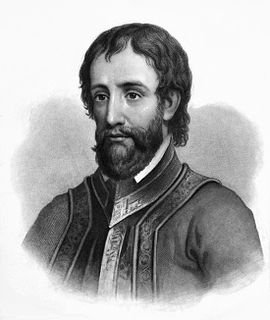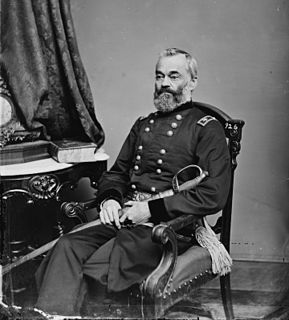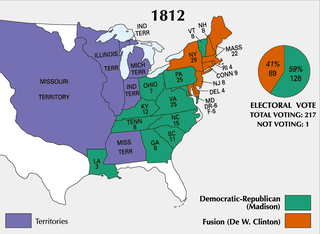| History of Texas | ||||||||||||||||||
|---|---|---|---|---|---|---|---|---|---|---|---|---|---|---|---|---|---|---|
 | ||||||||||||||||||
| Timeline | ||||||||||||||||||
| ||||||||||||||||||
| | ||||||||||||||||||
Samuel Kemper (died 1814) was an American adventurer and filibuster.
| History of Texas | ||||||||||||||||||
|---|---|---|---|---|---|---|---|---|---|---|---|---|---|---|---|---|---|---|
 | ||||||||||||||||||
| Timeline | ||||||||||||||||||
| ||||||||||||||||||
| | ||||||||||||||||||
Samuel Kemper (died 1814) was an American adventurer and filibuster.
Born in Fauquier County, Virginia, Kemper was involved, along with his brothers Reuben and Nathan Kemper, in the 1804 rebellion against Spanish authorities in West Florida.
Kemper participated in the 1812-13 Gutiérrez-Magee Expedition into Spanish Texas. He became commander of the force upon the death of Colonel Magee during the siege of La Bahia in February 1813. Kemper fought in both the victorious Battle of Rosillo Creek and the disastrous Battle of Medina. He eventually withdrew from the expedition when he lost confidence in the rebellious Mexican leaders.
Kemper fell ill from malaria on his return to the United States and died at St. Francisville, Louisiana, in 1814.

The Republic of Texas was a sovereign state in North America that existed from March 2, 1836, to February 19, 1846, although Mexico considered it a rebellious province during its entire existence. It was bordered by Mexico to the west and southwest, the Gulf of Mexico to the southeast, the two U.S. states of Louisiana and Arkansas to the east and northeast, and United States territories encompassing parts of the current U.S. states of Oklahoma, Kansas, Colorado, Wyoming, and New Mexico to the north and west. The Anglo residents of the republic were known as Texians.

Hernando de Soto was a Spanish explorer and conquistador who was involved in expeditions in Nicaragua and the Yucatan Peninsula. He played an important role in Francisco Pizarro's conquest of the Inca Empire in Peru, but is best known for leading the first European expedition deep into the territory of the modern-day United States. He is the first European documented as having crossed the Mississippi River.

Juan Ponce de León was a Spanish explorer and conquistador known for leading the first official European expedition to Florida and serving as the first governor of Puerto Rico. He was born in Santervás de Campos, Valladolid, Spain in 1474. Though little is known about his family, he was of noble birth and served in the Spanish military from a young age. He first came to the Americas as a "gentleman volunteer" with Christopher Columbus's second expedition in 1493.
The Battle of Medina was fought approximately 20 miles south of San Antonio de Bexar on August 18, 1813, as part of the Mexican War of Independence against Spanish authority in Mexico. Spanish troops led by General José Joaquín de Arredondo defeated republican forces, consisting of Tejano-Mexican and Tejano-American revolutionaries participating in the Gutiérrez–Magee Expedition, under General José Álvarez de Toledo y Dubois. It was the deadliest battle in Texas history.
José Joaquín de Arredondo y Mioño (1776–1837) was a 19th-century Spanish and Mexican soldier who served during the last two decades of Spanish rule in New Spain. He was military commandant of the Texas province during the first Texas revolutions against Spanish rule.

A filibuster, also known as a freebooter, is someone who engages in an unauthorized military expedition into a foreign country or territory to foster or support a political revolution or secession. The term is usually applied to United States citizens who incited insurrections across Latin America, particularly in the mid-19th century, usually with the goal of establishing an American-loyal regime that may later be annexed into the United States. Probably the most notable example is the Filibuster War initiated by William Walker in Nicaragua.

Samuel Peter Heintzelman was a United States Army general. He served in the Seminole War, the Mexican–American War, the Yuma War and the Cortina Troubles. During the American Civil War he was a prominent figure in the early months of the war rising to the command of a corps.
Manuel Antonio Santiago Tarín (1811–1849) was a Mexican soldier and a recruiter and participant in the Texas Revolution on the Texian side.
Reuben Kemper was an American pioneer and filibuster.

The Gutiérrez–Magee Expedition was an 1812–1813 joint filibustering expedition by Mexico and the United States against Spanish Texas during the early years of the Mexican War of Independence.
Manuel María de Salcedo y Quiroga,, was a governor of Spanish Texas from 1808 until his execution in 1813. Salcedo gained leadership experience helping his father Juan Manuel de Salcedo, the 11th and last Spanish governor of Louisiana,. In 1807, the younger Salcedo was appointed governor of Texas, and he officially assumed that role on November 7, 1808. As governor, he and his uncle Nemesio Salcedo, the Commandant General of the Interior Provinces, often disagreed, especially on immigration issues.
The Battle of Rosillo Creek was a conflict between the Republican Army of the North and Spanish Royalist forces which occurred on March 29, 1813 in Coahuila y Tejas. The battle took place during the Gutiérrez–Magee Expedition, a filibustering campaign which took place during the Mexican War of Independence.
The Battle of Alazan Creek, occurred on the banks of Alazan Creek in Spanish Texas on June 20, 1813, during the Mexican War of Independence. The location is today in Bexar County, Texas, in the United States, just west of downtown San Antonio.
José Bernardo Maximiliano Gutiérrez de Lara was an advocate and organizer of Mexican independence and the first constitutional governor of the state of Tamaulipas, and a native of Revilla, today Ciudad Guerrero, Mexico.
The exploration of North America by European sailors and geographers was an effort by major European powers to map and explore the continent with the goal of economic, religious and military expansion. The combative and rapid nature of this exploration is the result of a series of countering actions by neighboring European nations to ensure no single country had garnered enough wealth and power from the Americas to militarily tip the scales over on the European continent. It spanned the late 15th to early 17th centuries, and consisted primarily of expeditions funded by Spain, England, France and Portugal. See also the European colonization of the Americas

The following is a partial list of events from the year 1812 in the United States. After years of increasing tensions, the United States declares war on the British Empire, starting the War of 1812.
Events from the year 1813 in the United States.
Augustus William Magee ; was a U.S. Army lieutenant and later a military filibuster who led the Gutiérrez–Magee Expedition into Spanish Texas in 1812.

John Marie Durst (1797–1851) was born on the frontier in Arkansas, and was an early American settler, military veteran, and politician in Louisiana and Texas. As a youth, he learned the mercantile trade from his godfather Peter Samuel Davenport in Texas, where he also became fluent in several languages. French, Spanish and various Native American languages were spoken in this region in addition to English, reflecting its different colonial history. At the age of 18, Durst fought in the Battle of New Orleans with a Louisiana militia.
Vicente Sebastian Pintado y Brito was a Spanish cartographer, engineer, military officer and land surveyor of Spanish Louisiana and Spanish West Florida. He is known for conducting surveys of lands for settlers who had requested grants in Louisiana and Florida, as well as the so-called "Pintado plan", a street map of Pensacola drawn in 1812 which included the position and size of the solares designated for construction of the city's church and other public buildings. He lived more than 35 years in the Americas and left a large corpus of work consisting of maps, plats, letters and documents vital to an understanding of the complicated sale of lands in Florida and Louisiana during the period. In 1974, the Library of Congress in Washington, D.C. obtained a donation of the Pintado Collection, a collection of about 1,500 documents now stored in its Division of Manuscripts.